An Overview of NBFC Compliance
NBFCs (Non-Banking Financial Companies) are engaged in collecting deposits, loans, and advances, acquiring stocks, equities, etc., issued by a Government/Local Authority/other marketable securities. These companies are registered under the Companies Act, 2013. NBFCs are not similar to banks, but they perform lending activities almost at par with banks. Just as banks have various regulations and compliances to follow, NBFCs also need to meet certain compliance and file returns periodically and in case of non-compliance, there can be severe consequences, including penalties and even cancellation of NBFC Registration Certificate.
NBFC Compliance has been more complicated lately. There was a time when banks enjoyed benefits from Non-Banking Financial Firms and there was a time when compliance with NBFCs was much easier and lenient, but RBI drafted new NBFC Compliance. The NBFCs must submit various returns to the RBI concerning their deposit acceptance, ALM, Prudential Norms Compliance, etc., as per the Master Direction, NBFC Returns (Reserve Bank) Directions, 2016. The master directions provide the foundation for the RBI compliant & safe NBFC operational practices. NBFC Compliances & Returns are complex; hence, they should be read carefully to avoid heavy penalties.
Requirements for NBFC Compliances in India
The RBI has migrated the existing supervisory return online filing process from the COSMOS platform to the XBRL system. Hence, NBFCs are required to have the following to file returns on the all-new XBRL portal:
- Get the User id and password from the Reserve Bank of India;
- Installation of XBRL RBI file required;
- Update profile on the XBRL portal on a regular basis.
What are the Different Types of NBFCs?
- Based on Activities:
- Infrastructure Finance Company (IFC);
- Investment and Credit Company (ICC);
- Systemically Important Core Investment Company (CIC);
- NBFC- Non-Operative Financial Holding Company (NOFHC);
- Mortgage Guarantee Companies;
- NBFC-Factors NBFC- Microfinance Companies (MFIs) Infrastructure;
- Debt Fund Non-Banking Financial Company (IDF-NBFC).
- Based on Liabilities:
- Deposit Accepting NBFCs;
- Non-Deposit Accepting NBFCs;
- Systematically Important (NBFC-ND-SI);
- Other Non-Deposit Holding Companies.
Various NBFC Compliances & Returns in India
Following are the Monthly, Quarterly and Annual NBFC Compliances & Returns:
- Monthly Compliance:
|
Form |
Type of NBFCs |
Description |
Due Date |
|
DNBS-04B (Return Structural Liquidity and Interest Rate Sensitivity) |
NBFCs-NDSI and NBFCs-D |
To capture: The details of mismatch in the expected future cash inflows & outflows based on the maturity pattern of assets and liabilities at the end of reporting period for NBFCs-NDSI. The details or information of interest rate risk. |
Within ten days from the end of every month. |
|
NESL |
All NBFCs |
All are needed to report its Financial Debt to NESL |
Within a week from the date of the succeeding month. |
|
CIC Reporting |
All NBFCs |
Every NBFC (Non-Banking Financial Company) shall require to report its loans to all 4 CICs |
On & before 10th day of succeeding month. |
- Quarterly Compliances
|
Form |
Type of NBFC |
Description |
Due Date |
|
DNBS-01 Return |
NBFCs-D & NBFCs-NDSI |
The return captures financial points, viz. components of Assets and Liabilities, P&L accounts, Exposure to sensitive sectors etc., for NBFC-D and NBFC-NDSI |
15th April; 15th July; 15th October; 15th January |
|
DNBS-03 Return |
NBFCs-D & NBFCs-NDSI and Non-NDSI, NBFCs have asset size of more than 100 cr. |
The return captures compliance with prudential norms example, Capital Adequacy Asset (CAA), Asset Classification, and Provisioning, NOF, etc., for NBFC-Deposit-taking & NBFC-NDSI |
15th April; 15th July; 15th October; 15th January |
|
DNBS-04A Return STDL (Short Term Dynamic Liquidity) |
NBFCs-D & NBFCs-NDSI and Non-NDSI, NBFCs having asset size more than 100 cr. |
To capture details of mismatch in expected future cash inflows and outflows based on the business projections |
15th April; 15th July; 15th October; 15th January |
|
DNBS-06 |
RNBCs |
The return captures financial details such as components of assets & liabilities and compliance with various prudential norms for RNBCs. |
15th April; 15th July; 15th October; 15th January |
|
DNBS-07 |
ARCs |
To capture financial parameters & different operational details such as assets (NPA) acquired, acquisition cost, their recovery status, etc., for ARCs |
15th April; 15th July; 15th October; 15th January |
|
DNBS-08- CRILC Main Return |
NBFCs-D & NBFCs-NDSI and NBFC Factors |
To capture the credit details on aggregate Exposure of > 5 crores to a single borrower. |
21th April 21th July 21th October 21th January |
|
DNBS-11 |
NBFC-CICs |
The return captures financial points, viz. components of Assets as well as Liabilities, P&L Account, Exposure to sensitive sectors, etc., for CIC-ND-Sis. |
15th April 15th July 15th October 15th January |
|
DNBS-12 |
NBFC-CICs |
The return captures compliance with prudential norms for instance, Capital Adequacy, Asset Classification, Provisioning, NOF, etc., for CIC-ND-Sis. |
15th April 15th July 15th October 15th January |
|
DNBS-13 |
All NBFCs |
To capture information on Foreign Investment for all NBFCs having foreign investment |
15th April 15th July 15th October 15th January |
|
DNBS-14 |
NBFC-P2Ps |
The return captures financial information like components of assets & liabilities as well as compliance with various prudential norms for NBFCs-P2P |
15th April 15th July 15th October 15th January |
- Annual Compliances
|
Form |
Type of NBFC |
Description |
Due Date |
|
DNBS-02 Return |
Non-NDSI NBFCs |
The return captures financial details such as components of assets & liabilities and compliance with various prudential norms for non-deposit taking non-NDSI NBFCs. |
On or before 30th May (either audited or provisional basis), if provisional filled, then file audited within 30 days of finalisation of financials. |
|
DNBS-010 |
All NBFCs & ARCs |
To ensure continuous regulatory compliance for all Non-Banking Financial Companies (NBFCs). |
Within 15 days from the finalising the balance sheet date but not later than 31 Oct. |
- Additional NBFC Compliances:
|
Form |
Type of NBFC |
Description |
Due Date |
|
DNBS-05 Return |
Rejected NBFCs |
To capture details concerning NBFCs which accepted public deposits and whose CoR was rejected. |
As when COR is rejected by the Reserve Bank of India |
|
DNBS09-CRILC SMA Details |
NBFCs-NDSI & NBFCs-D & NBFC-Factors |
All NBFCs-D, NBFCs-NDSI & NBFCs-Factors along with aggregate Exposure> 5 cr to the single borrower reported in SMA-2 for the day. |
As & when the account is classified (de-classified) as SMA-2 |
|
CKYCR |
REs |
Every regulated entity (comprising NBFCs) shall do KYC while disbursing loans/creating account relationship. |
Within ten days from the date of account relationship |
|
CERSAI |
All Financial Institutions |
While disbursing secured loans |
As soon as possible for securing 1st change over the secured property |
|
FIU-IND |
All regulated entities |
Report certain transactions to FIU-IND agency mentioned under Rule 3 of PMLA Rules 2005 |
Within the 15th day of the succeeding month & within 7 working days of being satisfied that the transaction is suspicious |
Prudential Regulation of RBI Master Direction
Besides NBFC Compliances as mentioned above, there are other regulations that non-banking institutions must follow:
- Accounting of Investments: The Board of Directors (BOD) of NBFC are required to frame the investment policy for the company & execute it. For example, the criteria for classifying investments into current & long-term investments;
- Multiple NBFCs: All NBFCs would be aggregated jointly for the objective of checking the limit of Rs. 500 crores of asset size;
- Loans against the company's shares is prohibited which means no applicable NBFC can lead or take a credit against its own shares;
- Policy for Demand or Call Loans: The BODs of an applicable NBFC that wants to Demand or Call Loans should introduce a policy that would be implemented by the company;
- Classification of Assets: Applicable NBFCs should categorise their assets in the following classes:
- Standard Assets;
- Sub-Standard Assets;
- Loss Assets;
- Doubtful Assets.
- Disclosure in the Balance Sheet: Every Non-Banking Financial Company will have a separate disclosure provision for doubtful or bad debts and depreciation in investments;
- Each applicable Non-Banking Financial Company should make provision for the standard assets at 0.25% of the outstanding.
Penalties for Non-Compliance
If you are an NBFC and don't follow the compliances timely, then you would be subject to severe penalty by the RBI. The penalties for non-compliance vary for different kinds of NBFC. One of the biggest consequences could be the confiscation of the NBFC license or even it could lead to the company's closure.
Frequently Asked Questions
The returns that a Non-deposit NBFC needs to file are NBS 7, NBS 2, ALM Returns, and Branch Info Return.
The returns that a Deposit taking NBFC needs to file are NBS 1, NBS 2, NBS 3, NBS 4, NBS 6, ALM Return.
The periodical compliances for an NBFC are the appointment of director within 30 days of appointment, Adoption of any notification in the company’s Board Meeting and submitting the certified copy of the same with RBI.
The Annual Compliances for an NBFC are NBS 9, Convene Statutory Meeting, Maintenance of Accounts, GST Return Filing, Income Tax Return Filing, and the Annual Return Filing.
The Post-Incorporation Compliances for an NBFC are Adoption of Fair Practice Code, CIC Registration, FIU-IND Registration, Central KYC Registration, and Submission of Financial Information to Information Utilities.
The different types of NBFCs based on liabilities are deposit accepting NBFCs, Non-deposit accepting NBFCs, and Systematically Important Non-Deposit taking NBFCs.
The different types of compliances for a Non-deposit taking NBFC are Annual Compliances, Monthly Compliances, and Periodical Compliances.
The Reserve Bank of India (RBI) regulates and administers the operations of an NBFC in India within the framework of the RBI Act 1934.
The asset size for a Non-deposit taking NBFC can be either below Rs 100 crore or in between Rs 100 crore to Rs 500 crore.
Whenever an NBFC is having the asset size above Rs 500 crore, the same will be termed as a Systematically Important Non-Deposit taking NBFC.


